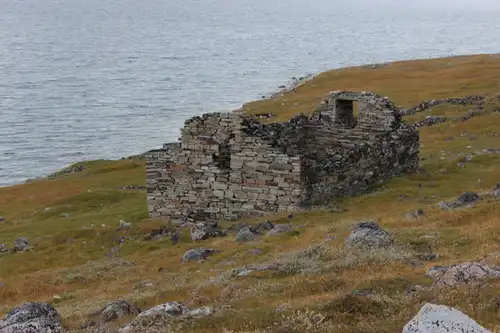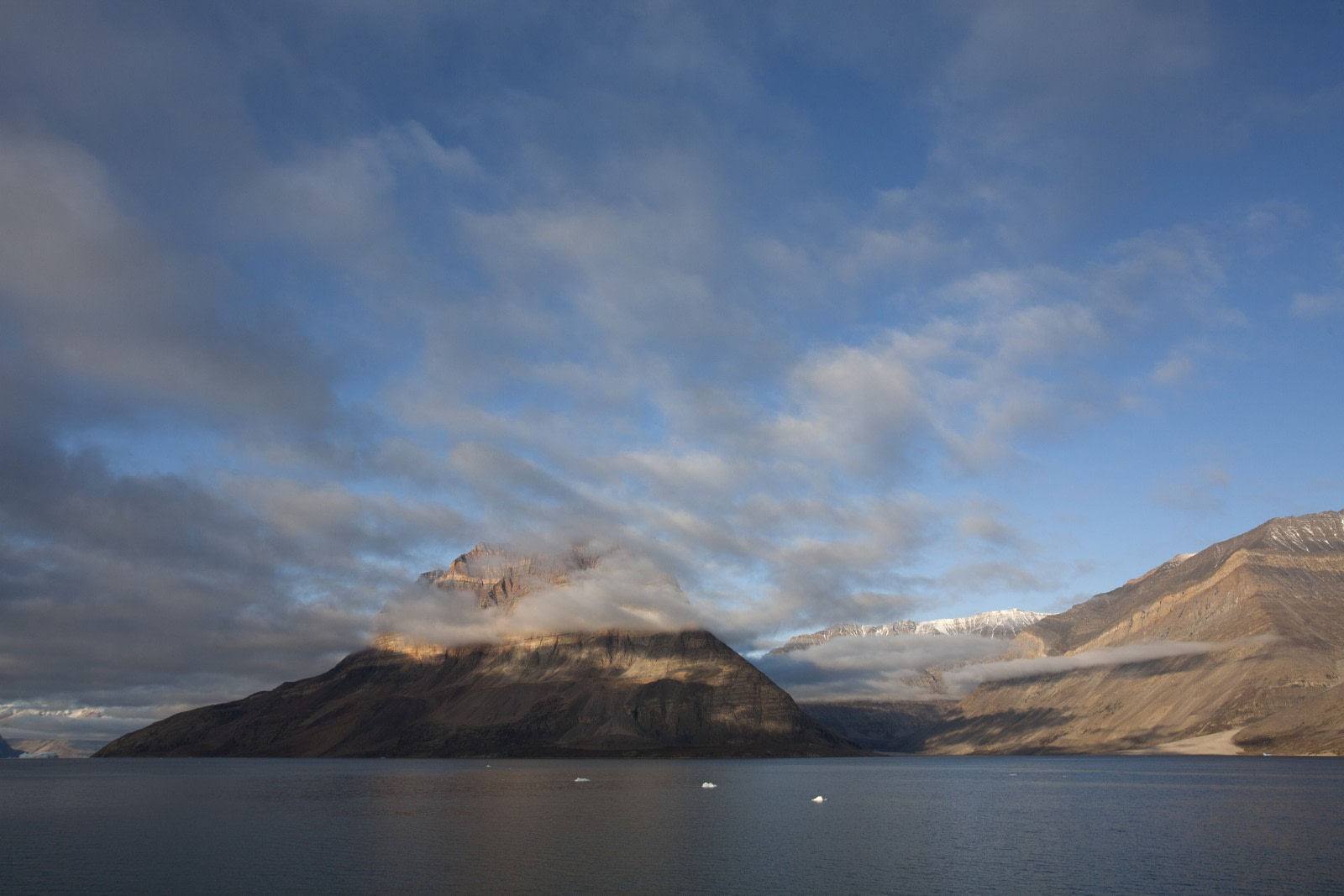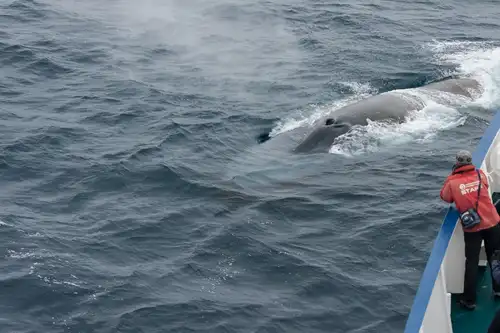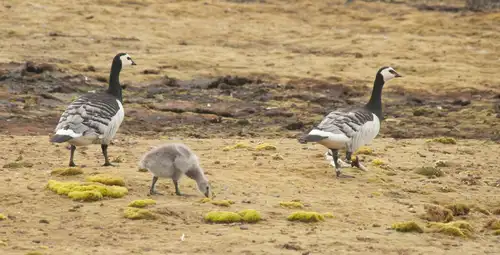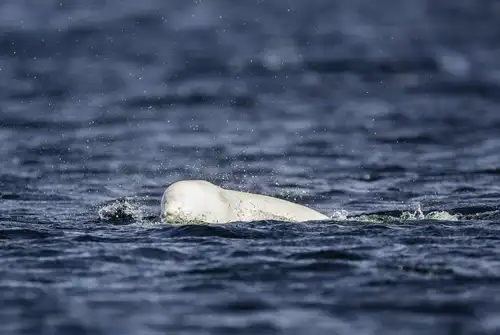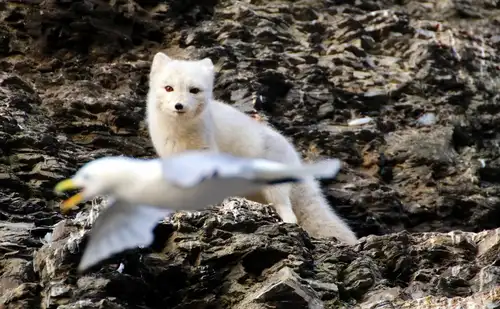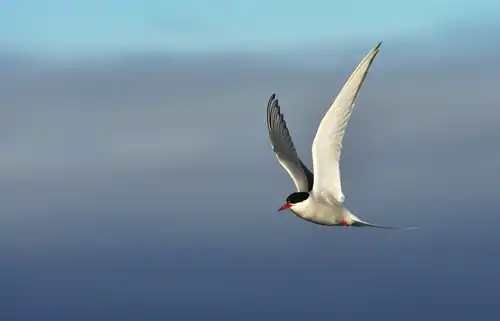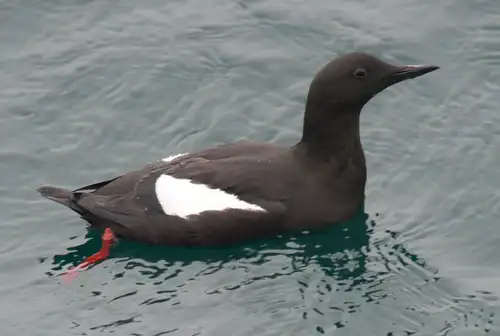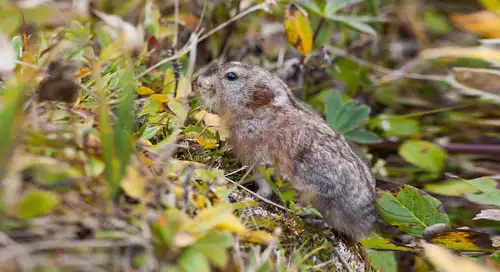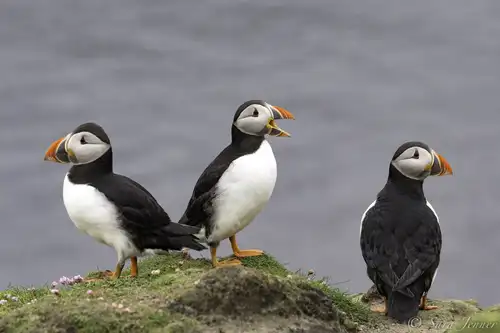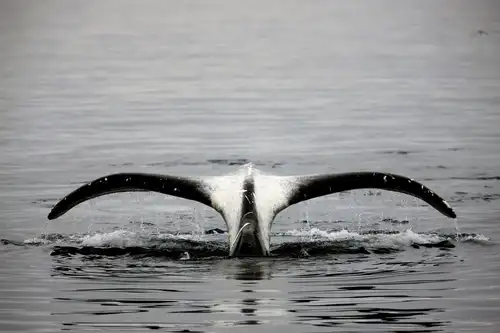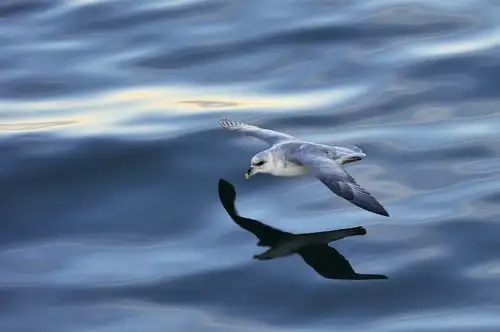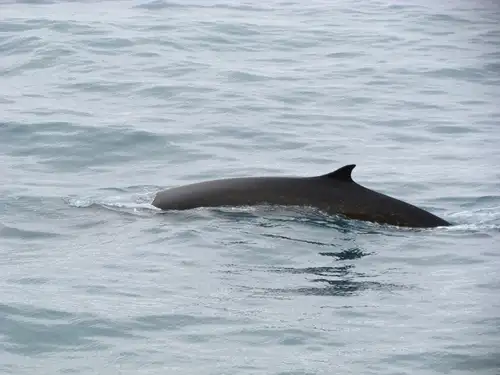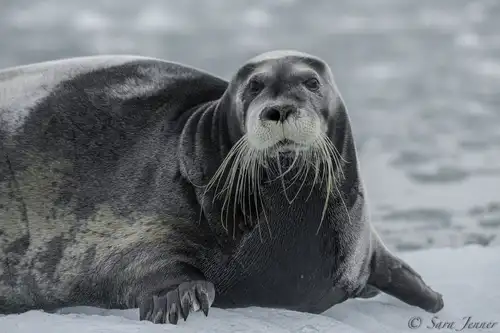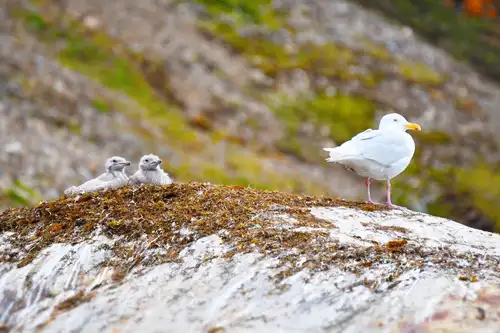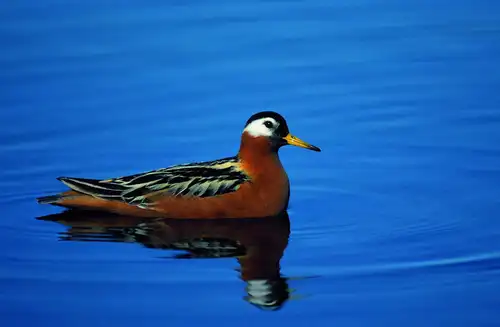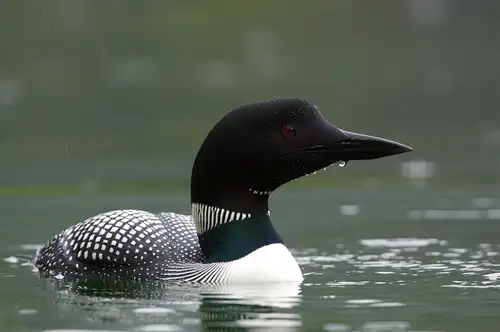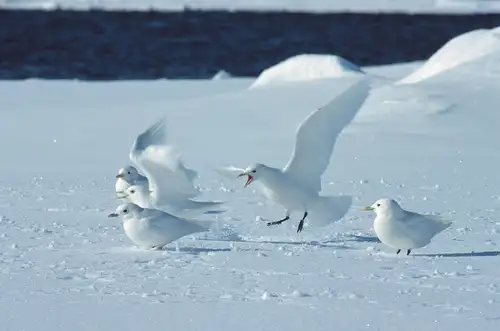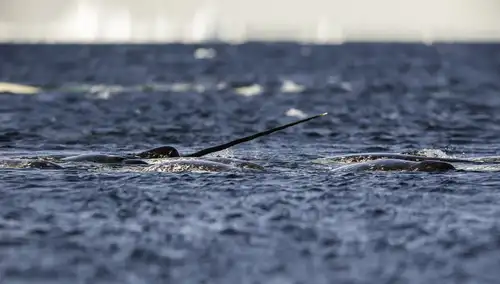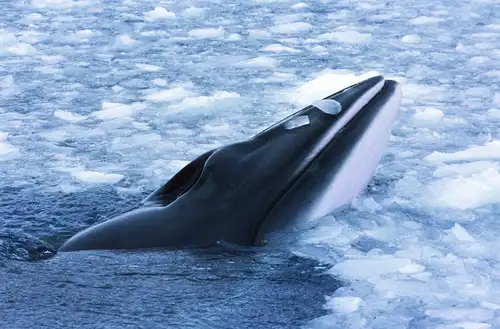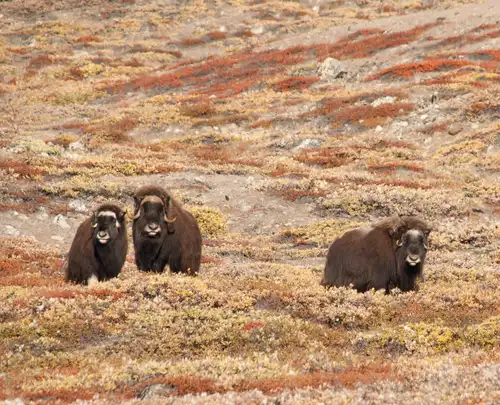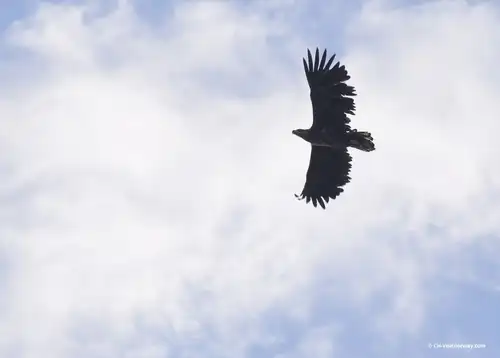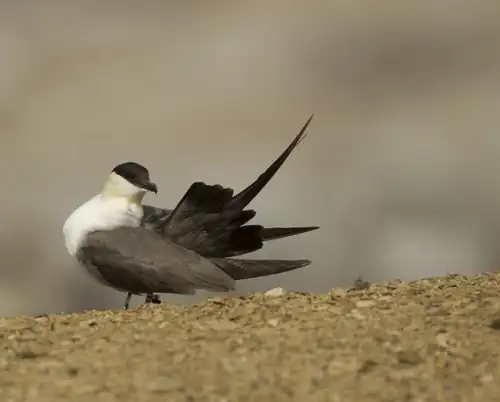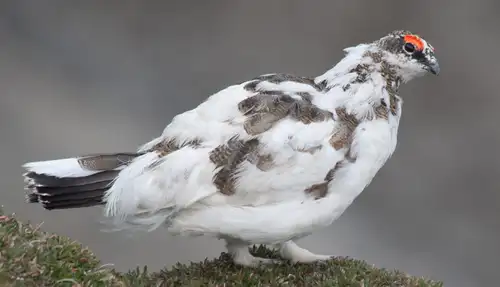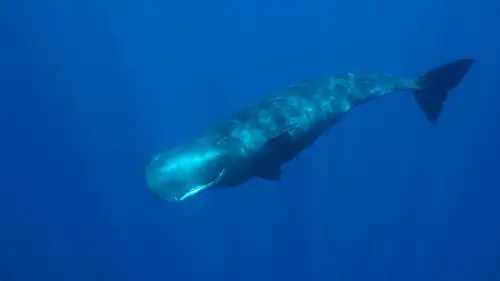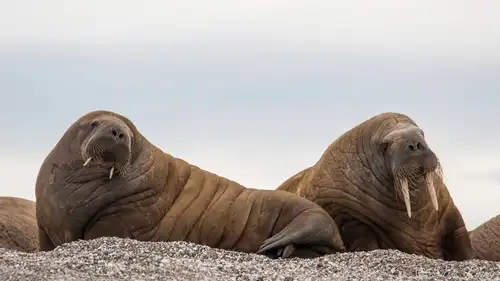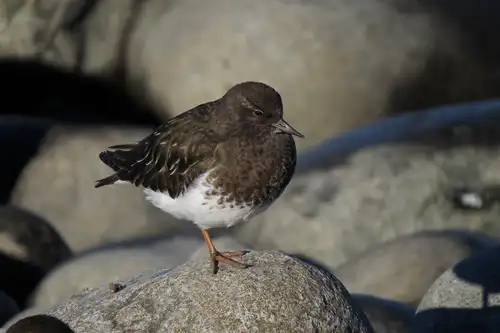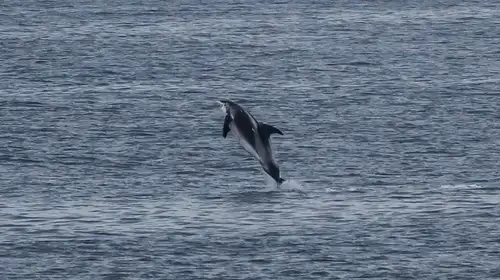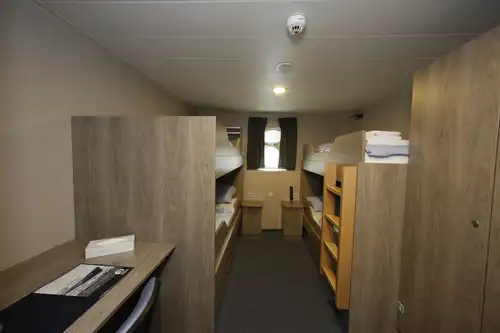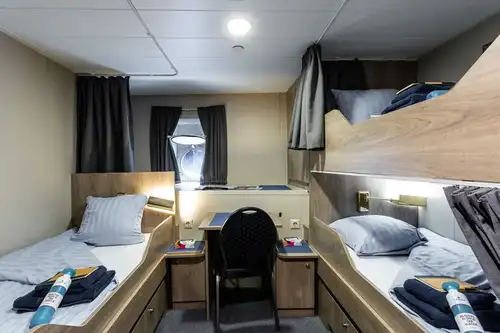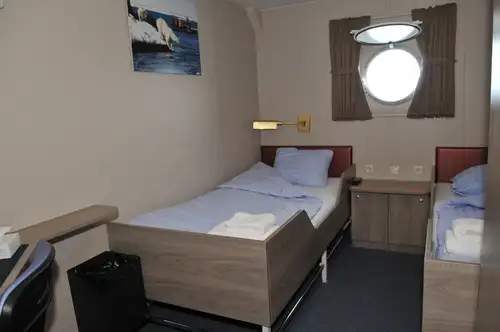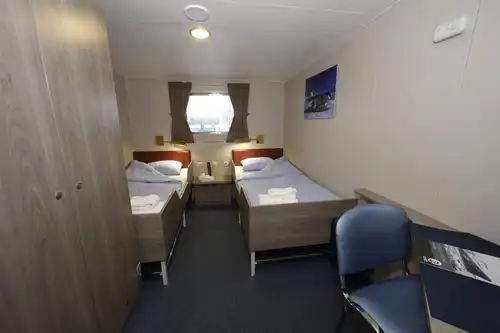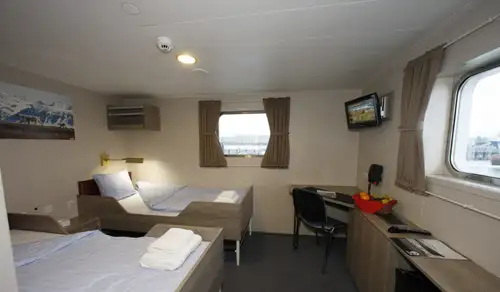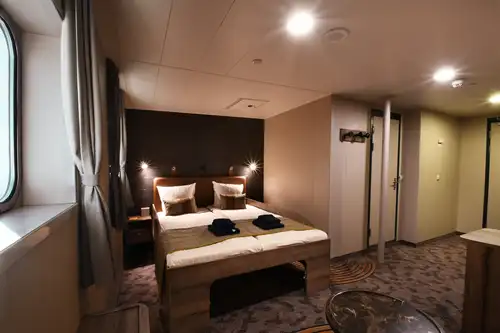 21 Days/20 Nights
21 Days/20 Nights
Note: All itineraries are for guidance only. Programs may vary depending on ice, weather, and wildlife conditions. Landings are subject to site availabilities, permissions, and environmental concerns per AECO regulations.
The adventure begins in Longyearbyen, the administrative center of Spitsbergen. Enjoy strolling around this former mining town, whose parish church and Svalbard Museum make for fascinating attractions. Though the countryside appears stark, more than a hundred species of plant have been recorded here. In the early evening the ship sails out of Isfjorden, where we might spot the first minke whale of the expedition.
Onward to East Greenland
We may eventually see the jagged edge of the east Greenland sea ice flashing into sight, depending on the conditions. Keep watch for whales and migrating seabirds.
Tundra, mountains, and icebergs
As we approach Greenland, we may sail through the sea ice into Foster Bay and land at Myggebugten. Beyond the old hunters’ hut where Norwegian trappers once hunted for polar bear and Arctic fox, there is a sprawling tundra populated by musk oxen as well as geese floating the small lakes. From here we sail through Kaiser Franz Josef Fjord, surrounded by towering mountains and bright interior icebergs. An alternate route is Sofia Sound, a narrower waterway.
The islands of Antarctic Sound
We arrive at Teufelschloss (Devil’s Castle), a mountain with layered geology. On the other side of the fjord is Blomsterbugt and the intended landing site. In the afternoon we head into Antarctic Sound, where we find the islands of Ruth, Maria, and Ella. Maria is the most likely spot for a landing.
Sights of the Arctic autumn
The first half of the day we spend in Antarctic Havn, an extensive valley where you can spot groups of musk oxen. At this time of year, the sparse vegetation is dressed in the fiery colors of autumn.
Arriving at Earth’s largest fjord
Today we reach Scoresby Sund, sailing along the glaciated Volquart Boons Kyst. You may also enjoy a Zodiac cruise past one of the glacier fronts, along with a visit to the basalt columns and ice formations of Vikingebugt. We continue along the east coast of Milne deeper into the fjord.
Enormous bergs, Arctic hares
In the morning we encounter colossal icebergs, some over 100 meters (328 feet) high and more than a kilometer long. Most of them are grounded, as the fjord is only about 400 meters deep (1,312 feet). We then land near Sydkap, with fine views of Hall Bredning and a good shot of seeing Arctic hares. Later we will land at Satakajik and see the remains of Thule dwellings.
Settlement at Scoresby Sund
Today we make a tundra landing on Liverpool Land, in Hurry Inlet. The afternoon stop is Ittoqqortoormiit, the largest settlement in Scoresby Sund at about three hundred inhabitants. At the post office you can buy stamps for your postcards or just stroll around to see the sled dogs and drying skins of seals and musk oxen. In the afternoon we sail south, passing the picturesque landscapes of the Blosseville Coast.
Thule huts and hiking spots
Our next stop is Stewart Island, an important hunting area for the people of Scoresby Sund. There are beautiful remains of Thule houses to be seen here. Rømer Fjord and Turner Sound, meanwhile, give us the opportunity to sail far inland, as they have no glacier front at their head and are not clogged with ice. This also provides us good hiking opportunities.
All the pretty fjords
Sailing south along the East Greenland coast, we enter several fjords competing in beauty: d’Aunay, Nansen, and possibly either Ikersuaq or Kangertitsivaqmiit. Most of these fjords have glacier front at the head, but any of them can offer us a chance to see polar bears.
Smalltown Greenland
Tasiilaq, once known as Angmagssalik (about 2,000 inhabitants) is our next port of call. This charming town is the center of East Greenland, boasting a museum where you can learn about the colorful local history of this incredibly remote area.
In the steps of Nansen
We next sail south to land at Umivik, where the explorer Fridtjof Nansen ascended the Greenland ice sheet. Here you may even be able to walk a short distance in his steps.
The valley of Mariedal
Today we circumnavigate Skjoldungen through one of the most spectacular fjords of southeast Greenland, then land at Qornoq to see houses from the Thule culture. We will then visit Mariedal and a beautiful valley where Greenlanders used to collect berries in autumn.
Abandoned Greenland settlement
Moving on to Timmiarmiut, we see an abandoned Greenlandic settlement and will possibly sail into the fjord. Polar bears have sometimes been spotted here in the past. As an alternative, we may visit Igutsait to the south.
Prins Christian Sund mountains
Our westward passing of the Prins Christian Sund is surrounded by mountains of over 1,000 meters (3,300 feet) and is one of the highlights of the cruise. We may make a landing at Svaerdfiskens Havn or in the evening at Ikigait, once known as Herjolfsnes, a former Norse settlement.
Uunartoq hot spring
Today we reach Lichtenau, a lovely though nearly deserted Greenlandic village, where the Herrnhuters had a mission in the 18th century and where some of their large German-style buildings still remain. We will then try to get to Uunartoq, where we can bathe in a large hot spring surrounded by icebergs. Across at Vagar, we find the remains of a Norse homestead.
Erik the Red’s base
In Eriksfjord we land at Ittileq, in a bay from which we can walk 4 km (2.5 miles) down a road to Igaliku (Gardar). In this small Greenlandic village, we can see the remains of a 13th-century Norse church, along with other ruins. Then in the afternoon, we plan to visit Bratthalid, the base of Erik the Red. This is a sub-Arctic area with birch trees, agriculture, and cattle. Later that evening, we arrive at Narssarsuaq for the final night of our cruise.
Saying goodbye to Greenland
From the WW2-era airport of Narssarsuaq, we fly back to Copenhagen. Though our adventure has come to an end, we take home memories that will accompany us wherever the next adventure lies.










































































- Flights to the embarkation point and from the disembarkation point.
- Pre- and post- land arrangements.
- Passport and visa expenses.
- Meals ashore.
- Personal health Insurance for Medical, Accident and Repatriation/Evacuating.
- All personal expenses, including but not limited to laundry services, bar beverages, and excess internet usage charges.
- The customary gratuity at the end of the voyages for stewards and other service personnel aboard (guidelines will be provided).
- Voyage aboard the indicated vessel
- All meals throughout the voyage aboard the ship including snacks, coffee and tea.
- All shore excursions and activities throughout the voyage by Zodiac.
- Program of lectures by noted naturalists and leadership by experienced expedition staff.
- Free use of rubber boots and snowshoes.
- Transfers and baggage handling between the airport, hotels and ship only for those passengers on the group flights to and from Longyearbyen.
- All miscellaneous service taxes and port charges throughout the programme.
- AECO fees and governmental taxes.
- Comprehensive pre-departure material.
- Our sailing vessel is much smaller compared to our motor-vessels. The maximum number of passengers is 33 on s/v Rembrandt van Rijn. The atmosphere on board is very intimate and there is more direct contact with the sailing crew. The number of guides on board is also lower, on Rembrandt van Rijn there are two staff members who will lead shore and Zodiac activities. Rembrandt's sailing speed is slower compared to our motor vessels so the distances covered will also be different. With Rembrandt being smaller though this opens more possibilities for activity sites as she can access more areas, because of this there is a greater amount of flexibility with the sailing itineraries.
- Children under the age of 18 are not allowed to stay in a cabin without parental or adult supervision.
- No, you are not able to get cash advances on the vessel.
- When you make a confirmed reservation, we require a 40% deposit. But if the reservation is made within two months prior to departure, the full price of the voyage is due at the time of booking.
- The surface of Greenland is dramatic and spectacular. Heavily indented with numerous fjords, the coast is formed by spectacular high mountains, 2000 meters (6500 feet) high cliffs and innumerable glaciers. The large glaciers produce the huge cathedral-like icebergs that are abundant in the Greenlandic waters. Greenland and its surrounding waters are home to an impressive array of wildlife.
- A Greenland cruise may enable you to see a large variety of birds. There are about 52 bird species on the island. The number of land mammal species is relatively small, but it is still possible to see polar bears, Arctic hares, reindeer, musk oxen and Arctic foxes. Marine mammals such as Fin whale, Minke whale and Humpback whales are frequently seen. Blue Whales, Sperm Whales, and Pilot Whales are also seen occasionally. Greenland is home to more terrestrial mammal species than Spitsbergen: The extremely rare Arctic Wolves, Arctic Foxes, Ermines, Collared Lemmings, Muskoxen, and Arctic Hares. The Polar Bear is rarely seen on the west coast, but is regularly seen on the northern and north-eastern coasts.
- The ship Plancius was built in 1976 as an oceanographic research vessel for the Royal Dutch Navy.
- There is place for 116 passengers aboard the Plancius. Furthermore there are 45 staff & crew on board : 17 nautical crew, 19 hotel staff (6 chefs, 1 hotel manager, 1 steward-barman and 11 stewards/cabin cleaners), 7 or 8 expedition staff and 1 doctor on board.
You May Also Like


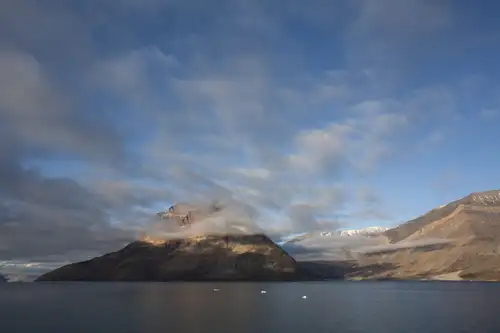
East and South Greenland Explorer, Incl. flight from Narsarsuaq to Copenhagen
 21 Days / 20 Nights
21 Days / 20 Nights

Ultimate East and South Greenland Discovery
 30 Days / 29 Nights
30 Days / 29 Nights
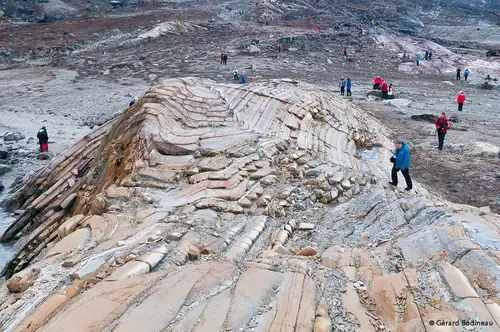
Spitsbergen - Northeast Greenland - Aurora Borealis, Including Long Hikes
 14 Days / 13 Nights
14 Days / 13 Nights
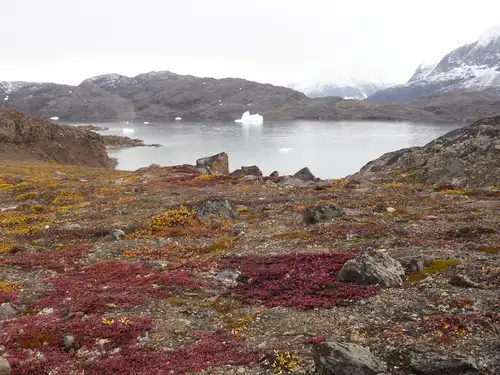
East Greenland, Scoresby Sund - Aurora Borealis, Including Long Hikes
 10 Days / 9 Nights
10 Days / 9 Nights
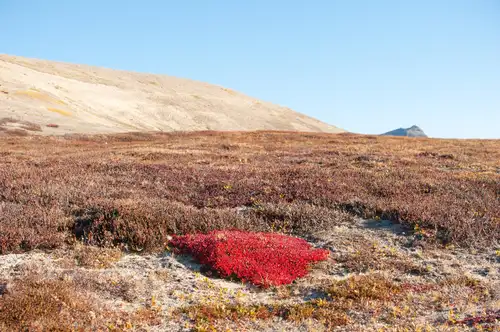
South Greenland Explorer, Aurora Borealis, Incl. flight from Copenhagen to Narsarsuaq
 10 Days / 9 Nights
10 Days / 9 Nights
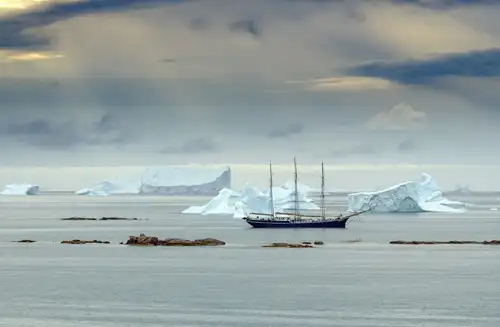
East Greenland - Scoresby Sund - Iceland, Aurora Borealis, Fly & Sail
 12 Days / 11 Nights
12 Days / 11 Nights

Northeast Greenland Solar Eclipse Explorer Voyage
 14 Days / 13 Nights
14 Days / 13 Nights

Spitsbergen - Northeast Greenland, Fly & Sail
 20 Days / 19 Nights
20 Days / 19 Nights
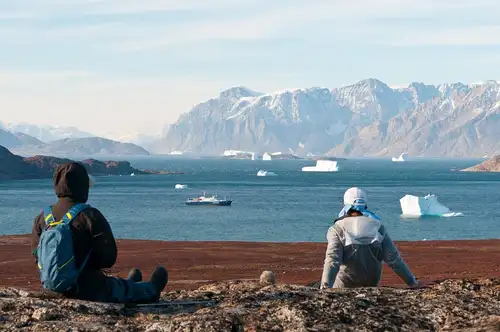
Northeast Greenland Extreme
 14 Days / 13 Nights
14 Days / 13 Nights

East Greenland, Scoresby Sund, Including Long Hikes
 10 Days / 9 Nights
10 Days / 9 Nights

East & South Greenland Explorer – Aurora Borealis
 15 Days / 14 Nights
15 Days / 14 Nights

East Greenland, Scoresby Sund - Aurora Borealis, Fly & Sail
 11 Days / 10 Nights
11 Days / 10 Nights

East Greenland, Scoresby Sund - Iceland , Aurora Borealis, Fly & Sail
 12 Days / 11 Nights
12 Days / 11 Nights

10 Tips for Photographing the Northern Lights
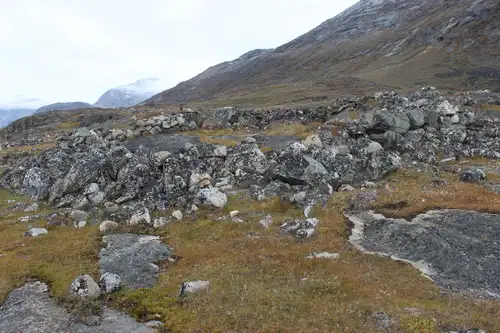
The Norse Settlement of Greenland
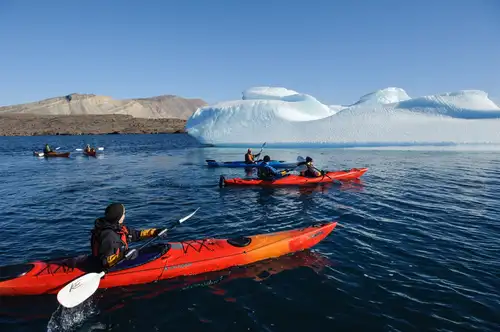
Greenland: Where the Kayak Was Invented
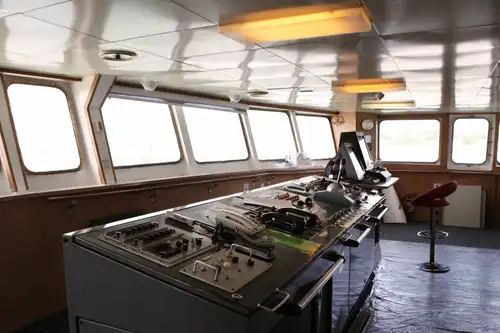
Navigating by touch through the sea ice
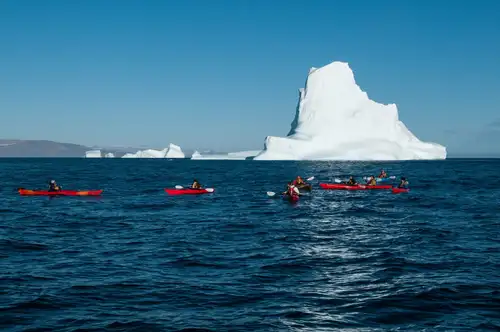
Kayaking In Greenland

Peaks, Fjords, and Auroras: 14 East Greenland Attractions
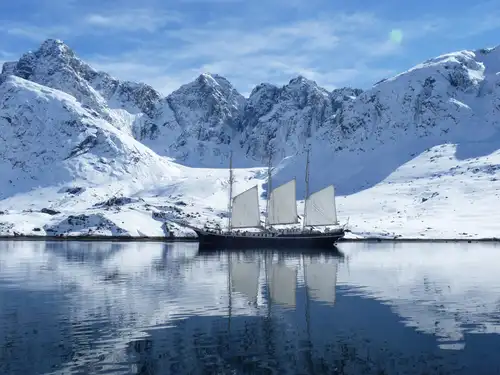
Why You Should Visit Greenland: 11 Things to See, Do, and Explore
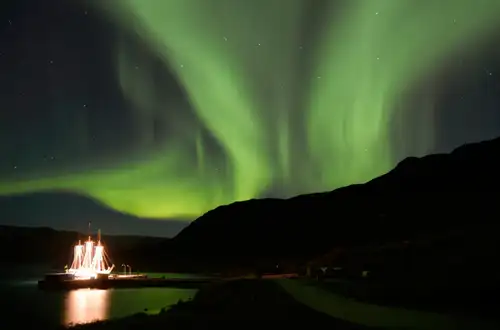
The Northern Lights dancing across the skies

The bowhead whale, whaling about the Arctic

Traditional Lifestyles of the Inuit
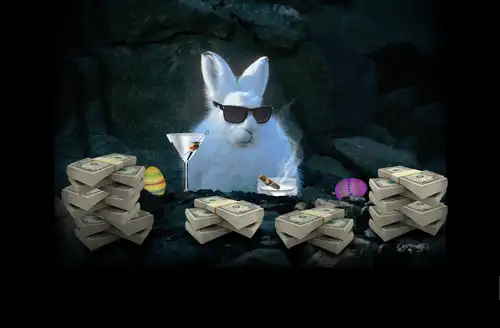
The Arctic Hare: Easter Bunny
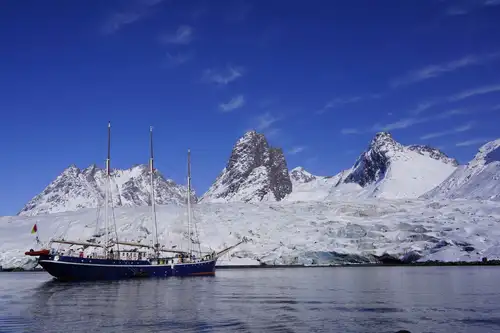
5 Misconceptions You Might Have About Greenland
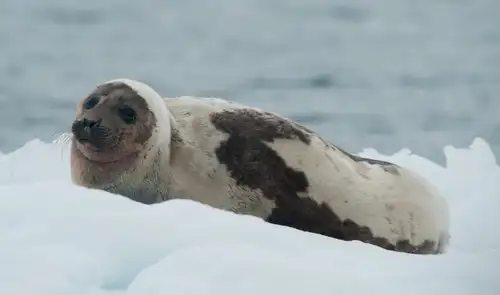
Harp seals harping on in Greenland
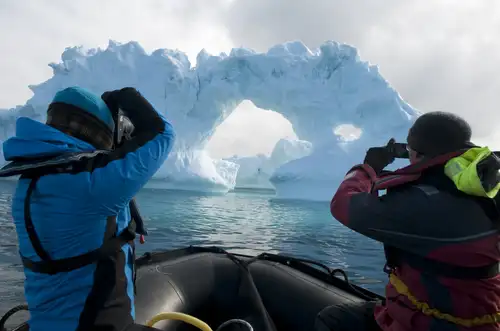
Under the Greenland Ice Sheet
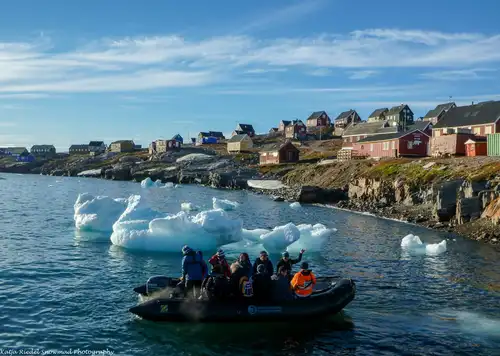
Scoresby Sund: the Greatest Greenland Adventure
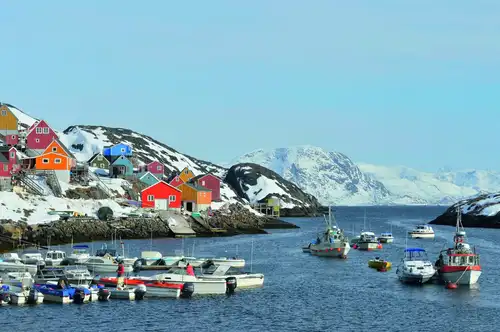
Amazing Greenland
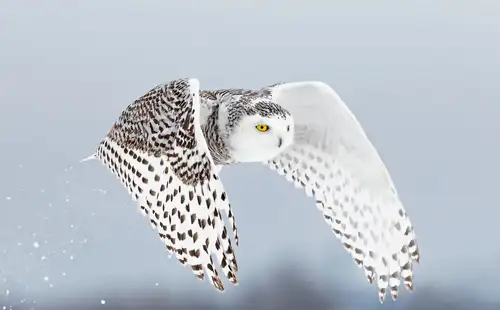
Secrets of the Snowy Owl: Habitat, Adaptations, and Other Facts
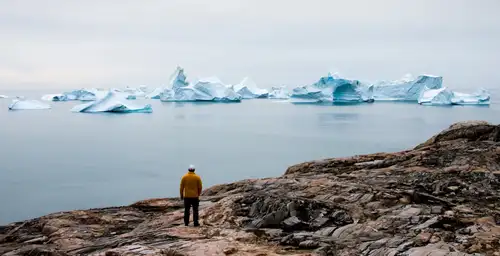
Tracking Greenland’s Wildlife from Space
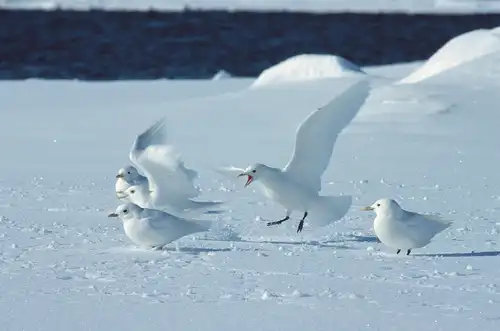
Birds of the North: 29 Arctic Birds and Seabirds
